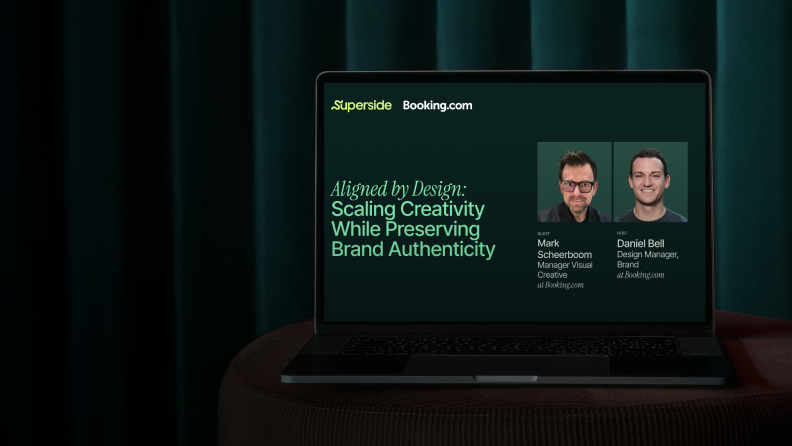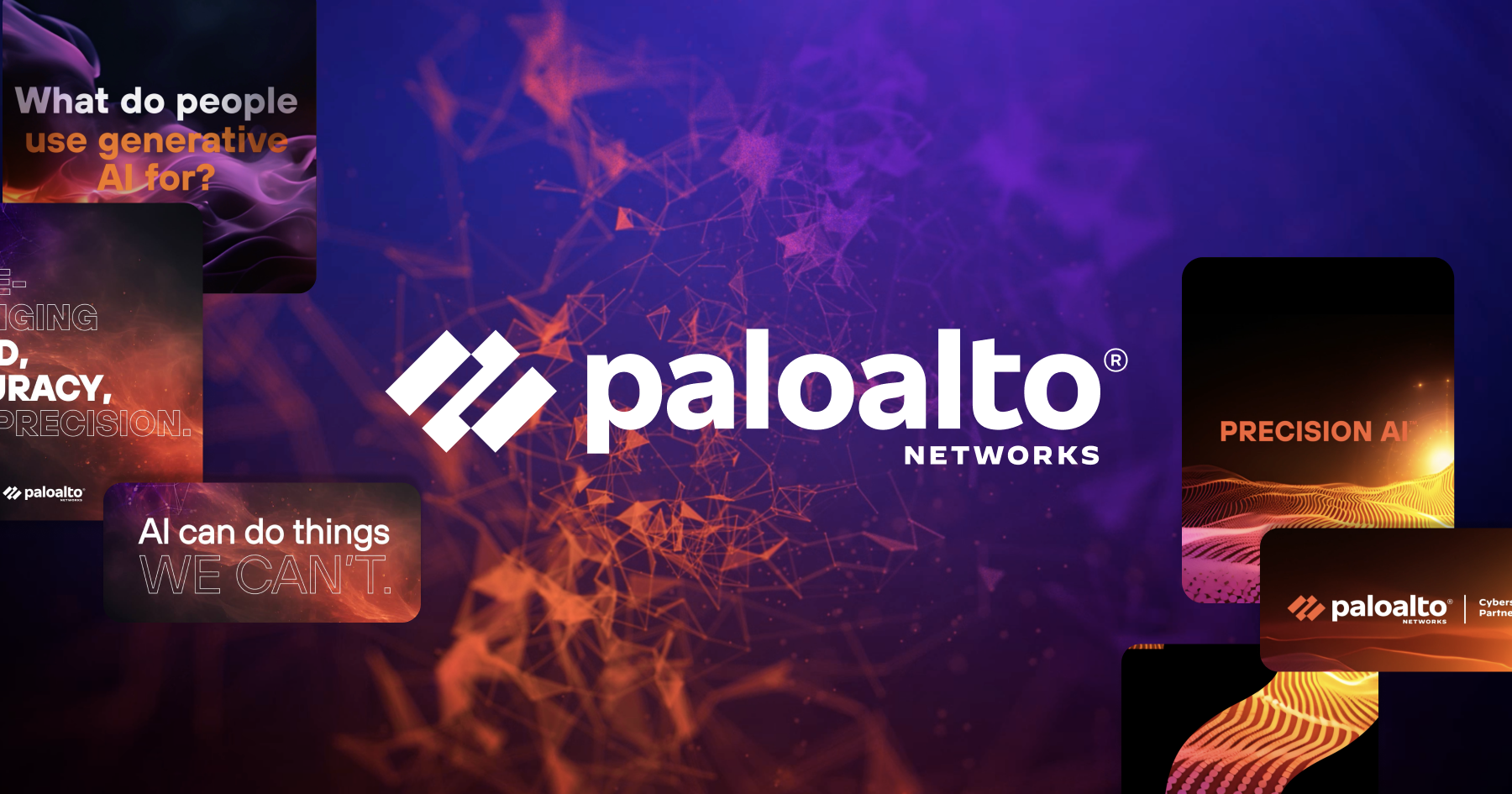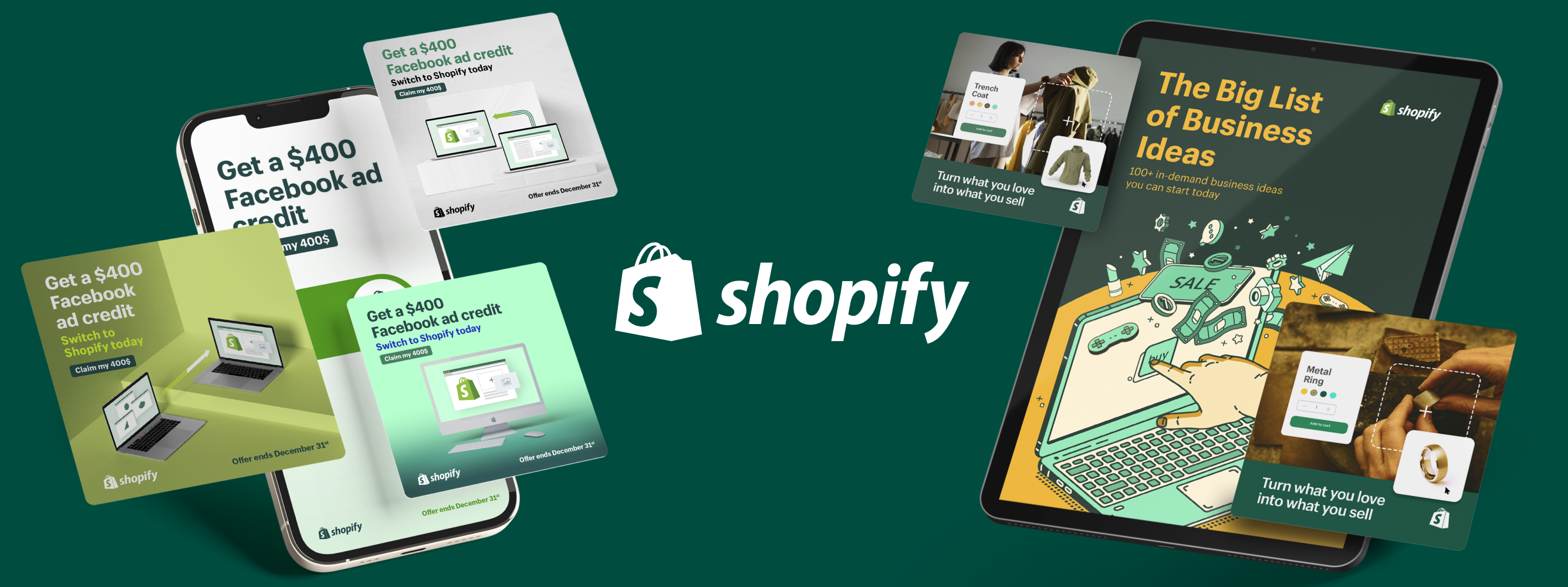How to Maximize Brand Awareness & 10 Tips to Build It

“I Googled this cafe and the reviews are great! Can I order a Coke, please?”
Consider how weird that sentence might sound without the inclusion of the two brands: “I performed an internet search of this cafe and the reviews are great! Can I order a cola, please?”
Google and Coca-Cola are so well-known that they replace their technically correct counterparts in almost every instance. These terms are known as proprietary eponyms, and they are the pinnacle of brand awareness.
We're talking about:
Why is Brand Awareness Important?
10 Ways To Maximize Brand Awareness
The Importance of Design in Brand Awareness
How to Measure Brand Awareness
Examples of Excellent Brand Awareness Ads
How to Increase Your Brand Awareness
What is Brand Awareness?
Brand awareness is the level of customer recognition of a brand's products or services. It is important for businesses because it builds brand equity, creates brand association, and can be a major factor in determining consumer purchase decisions. Brand awareness is measured through various means such as surveys, focus groups, or brand recall tests.
Brand awareness is more than just general brand recognition: it is intended to evoke a response from your target audience. In other words, your marketing material shouldn’t just get your name out there, it should make your name synonymous with excellence in your industry.
Why is Brand Awareness Important?
Brand awareness helps you create emotional connections with your customers. It builds trust, establishes positive connections and fosters brand loyalty. Brand awareness is responsible for customers first recognizing and then preferring your brand - and, over time, acting as a brand ambassador to family and friends (“I love my new Nike sneakers!” “I got this on Amazon.” “Look at this feature on my iPhone!”).
This is why brand awareness is so important, and how it benefits any business of any size in any industry.
10 Ways To Maximize Brand Awareness
A good brand awareness strategy utilizes a number of different tactics across a range of channels. Our top ten tips to increase your brand awareness include:
- Invest in Marketing Campaigns
- Build Great PR & Influencer Relationships
- Ace Your Social Media Marketing
- Develop a Strong SEO Strategy
- Create Informative, Targeted Content
- Use PPC Advertising
- Foster Brand Partnerships
- Utilize Offline Content
- Consider Infographics
- Employ Remarketing Campaigns
Invest in Marketing Campaigns
The key word here is ‘invest’. A robust marketing campaign requires great creative content, a thorough roll-out strategy, constant data monitoring and a team to make all the moving parts move. But the juice is worth the squeeze: marketing campaigns are how brands reach a wide audience. They’re impactful and memorable, and convert consumers into customers through multiple touchpoints.
Build Great PR & Influencer Relationships
PR (public relations) is the management of how your audience views your brand. News articles, radio spots and television appearances all fall under PR. The biggest benefit PR offers is that it allows you to be proactive about how you want your audience to perceive you.
Influencers build brand awareness by targeting their existing followers with curated product or service content, usually highlighting key features and positioning the brand in a favorable way. It’s worth noting that depending on their number of followers, influencer pricing can vary significantly. Like PR, influencer marketing is effective because the brand is given final sign off on how it is viewed and experienced.
Ace Your Social Media Marketing
Social media (which includes channels like LinkedIn and WhatsApp) provides a powerful platform to promote your brand and build relationships with your customers. Because of the nature of social media, this type of marketing content is most effective when it is engaging, memorable and, arguably most importantly, entertaining.
Additionally, don’t forget to leverage the ‘social’ side of these platforms. Post various different forms of content (like carousels, interactive polls, gifs or video content), engage with your audience by responding to comments and questions, or run giveaways or competitions. Social media channels offer tremendous reach and the brands that take full advantage of this are the ones that consumers remember.
Develop a Strong SEO Strategy
Good SEO (search engine optimization) is critical to ensuring your content ranks as highly as possible on search engines like Google. It makes your content much more likely to be seen by consumers. After all, who goes to page 2 of a Google search result?
Unlike the other tips on this list, SEO is not directly customer-facing and therefore is something you can improve virtually immediately. Brands can do this by:
- Using relevant industry keywords. Research and incorporate the highest ranking words to give search engines the necessary information to show your content to your target audience.
- Creating content around these keywords. For example, an eCommerce store may want to rank for keywords such as “online shopping”, “free delivery” or “same day service”. In this case, these keywords could easily be used in a promotional post or blog entitled “Online shopping just got better. Try our free delivery service!”
- Avoiding keyword stuffing. Remember that you’re writing for people first! A poorly written piece of content with a nonsensical overuse of keywords will not have the desired results - in fact, search engines can penalize you for this.
- Leveraging video SEO. This entails optimizing your video SEO to be indexed and rank higher on pages for relevant keyword searches (thereby getting more eyes on your video content).
Create Informative, Targeted Content
Content for content’s sake is a waste of your time and your customer’s. It should be informative and targeted to the specific needs of your audience. Make people want to read the content you create by consistently providing information that is relevant and valuable.
Use PPC Advertising
PPC (pay-per-click) ads are an effective way to increase your brand awareness on Google. When a consumer needs a product or service in line with your offering, your website will appear at the top of their search results.
Brands only pay when an ad is clicked, meaning more consumers will see your brand than you are paying for and your spend is dedicated to those that have actually engaged with your URL. By utilizing data from PPC dashboards, companies can refine their strategies, ensuring that their budget is allocated to genuinely interested users who have engaged with their URL.
Paid social media works in a similar way, except instead of your brand website, consumers are shown a brand post or advert (this is listed as Sponsored Content on most social media channels).
Examples of PPC adverts. Source: Google
Foster Brand Partnerships
Brand partnerships are common and an excellent way to increase brand awareness, as you’re associating your brand with one that already has an established audience of their own. Open a new tab and Google “Gucci x “, and you’ll have an idea of the power (and range!) of brand partnerships.
Admittedly, not every brand can partner with Gucci. Smaller brands can accomplish the same by partnering with local companies, SMEs, or community events such as fun runs or festivals.
Use Offline Content
Although it feels like everything happens online these days, the offline world still exists. Brands can increase their awareness by building an offline marketing campaign (think billboards, print material, posters, flyers or brochures). The benefit of offline marketing is that the bar is generally quite low - when last did an offline advert really catch your eye? By cutting through the clutter and creating captivating content, you can boost your brand awareness.
Consider Infographics
Although infographics and iconography might not fall into every brand’s style guide, they are valuable when it comes to displaying marketing data, statistics and other consumable content. Infographics can build brand awareness in 3 ways:
- They can be used (almost) everywhere. Infographics work on homepages, social media, in print, and alone or as part of longer-form content like blogs.
- They’re bright and colorful. Visuals are much more engaging and memorable than plain black-and-white text.
- They have a long shelf life. Infographics may take longer to create than simple text, but the trade off is that they serve their purpose for much longer, and can be repurposed and reused whenever necessary.
Employ Remarketing Campaigns
Chances are you’ve been exposed to numerous remarketing campaigns before. They work like this: if a would-be customer visited your site but did not convert, remarketing ensures that the same user will see ads for your brand on social media and other sites. If the user clicked on a product, like a pair of headphones, images of those same headphones will pull through to the adverts served.
They’re effective, measurable, and through sheer repetition, position your brand as a flagship provider in your industry.
The Importance of Design in Brand Awareness
Without consistency in design, brand awareness can be severely impacted. Picture the Netflix home screen, or Google’s design of their Google Workspace logos, or a FedEx delivery van versus a UPS van. The fact that you can instantly recall all of these in your mind’s eye shows how design goes hand-in-hand with brand awareness.
This is why brands work so hard on creating a recognizable logo and using distinct brand assets like key colors and fonts. A good brand style guide will have detailed do’s and don’ts to ensure that every piece of branded content - from your homepage to corporate gifting - looks and feels consistent.
However, scaling your design efforts to manage consistent brand exposure across as many different channels as possible is easier said than done. Brands with large volumes of design needs can gain from partnering with brand and design experts such as Superside.
How to Measure Brand Awareness
Measuring brand awareness can be done in a number of different ways, each with a different focus and metric. Although it’s impossible to measure exactly how many people are aware of your brand and what their perceptions might be, these measurement approaches can provide key data and insights.
Site Traffic
Most brands that have a website (which is most brands) use that as a core tool to convert customers. Is your site traffic increasing in line with your brand awareness efforts? If so, see what’s working and lean into that. If not, use the data to identify what you might need to improve.
Social Media Followers
A brand’s social media account will come with a wealth of data you can peruse. Look at your number of followers, which posts outperformed others in terms of engagement, and how often people interact with your content.
Brand Recall and Recognition Tests
Unlike reviewing data, these tests work with a focus group. Brand recall tests ask customers if they can remember a particular brand when given a list of other brands in the same industry. Brand recognition tests ask customers whether they can recognize a brand when presented with its logo or other visual cues. Both give excellent, first-hand feedback on how your brand awareness efforts stack up against your competitors.
Surveys
Brand awareness surveys typically ask questions about how often customers have seen or heard ads for a particular brand, or how likely they would be to consider purchasing that brand's products or services. Unlike a recall or recognition test, a survey can be sent to a much wider audience and therefore provide a more accurate reflection of your overall audience.
Examples of Excellent Brand Awareness Ads
It’s no surprise that the bigger the brand, the bigger the brand awareness. However, these 3 examples illustrate how good brand awareness can say everything needed simply by association.
McDonald’s used their iconic golden arches to excellent effect in this outdoor campaign:
Heinz made themselves synonymous with ketchup through these ads:
And Metro Trains in Australia created global brand awareness with their ultra-catchy educational jingle around the dangers of train platforms.
How to Increase Your Brand Awareness
Today's competitive marketplace makes building brand awareness more important than ever. By following the tips and advice outlined in this article, you can give your business the best chance of success.
If you want to take your brand awareness to the next level, see how Superside’s branding services can help your business.
You may also like these

Why brands that build community get customers for life
Ads don’t seem to hit like they used to. Your customer acquisition cost is through the roof. And even when you do bring in customers, it feels like they’re only with you for a moment before disappearing forever. Some brands might be able to sustain their growth in these conditions, either because they have a massive war chest or their customers make massive transactions.But for most, there’s a better way to grow. By building a community and a fan base, you can get customers for life.At Superside’s Insider Summit, Ty Haney, three-time founder and current CEO of Try Your Best, shared how her approach to community has catapulted the brands she’s built to new heights—and how her latest venture has turned this into a business.What is community-led growth?In short? Shifting from acquiring customers to building a fan base. It means creating experiences that reward customers, granting them access to exclusive perks, and giving them something to get excited about beyond the transactional. It’s about giving them opportunities to become obsessed with your product and your brand until they become micro-influencers.
Aligned by design: 8 ways Booking.com scales creativity without losing brand soul
When you’re one of the most recognized travel platforms in the world, scaling creative production isn’t just a workflow challenge—it’s a brand trust exercise. With thousands of assets created across dozens of markets, the Booking.com team has figured out how to scale with clarity, not chaos.In a recent Superside webinar, we went behind the curtain with two creative leads from Booking.com—Daniel Bell (Design Manager of Brand) and Mark Sheerboom (Manager of Visual Creative). They shared how they create and quality-control thousands of visual assets each year, stay true to a deceptively simple brand system and make space for creativity, authenticity and real human moments. One thing is certain: Booking.com isn’t just a global travel giant—it’s a creative machine.Dive in to discover eight strategies that’ve helped them become a global creative powerhouse and how your team can use them too.Simplicity as a superpower
An expert 7-step brand strategy framework
In an era where businesses are under pressure to produce results quickly, it’s easy to see branding as just another box to check off. However, a well-thought-out brand strategy framework isn’t just a marketing play—it’s a foundational business tool that helps teams prioritize messaging, work more efficiently and create long-term impact.During Superside’s Overcommitted Virtual Summit, branding expert and Twilio VP of Brand Adam Morgan delved into how companies can build brands that stand the test of time. Morgan, a veteran of branding initiatives at Adobe, Splunk and Twilio, provided a wealth of insights on how to approach branding with intention, align brand identity with business goals and ensure it connects deeply with customers. Dive in to learn more about the importance of purpose, audience alignment and strategic execution—all while keeping in mind the challenges of overcommitment and burnout that many creative teams face.Why branding matters more than everThere's a common misconception about branding strategies that they're just about visuals and logos. Morgan emphasized that brand strategy is about creating an emotional and strategic connection between a company and its audience.








